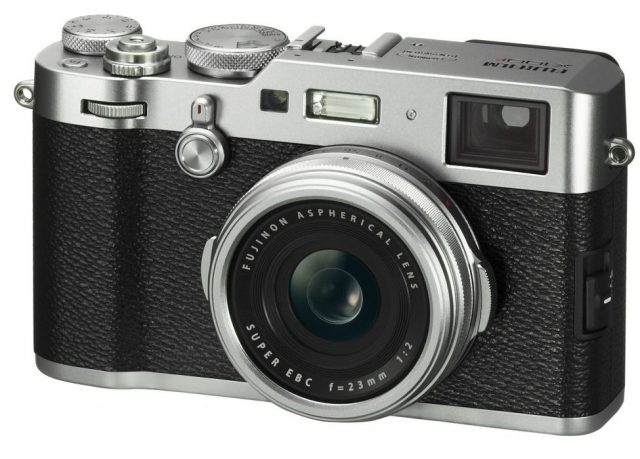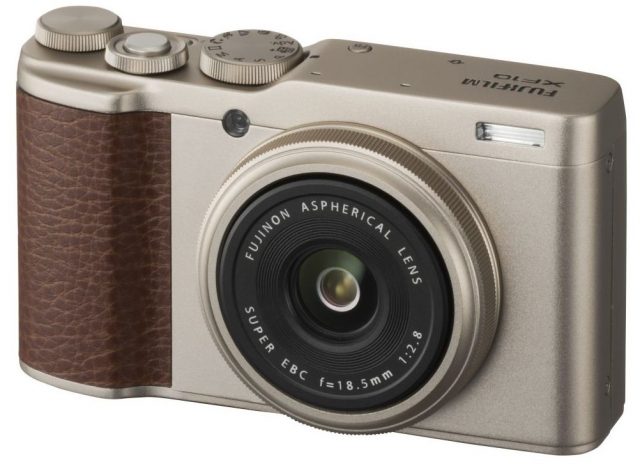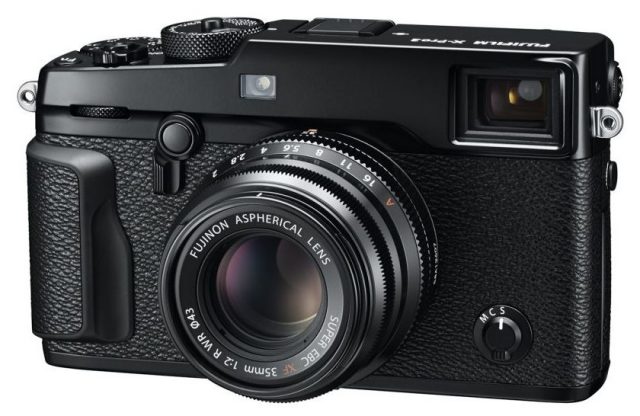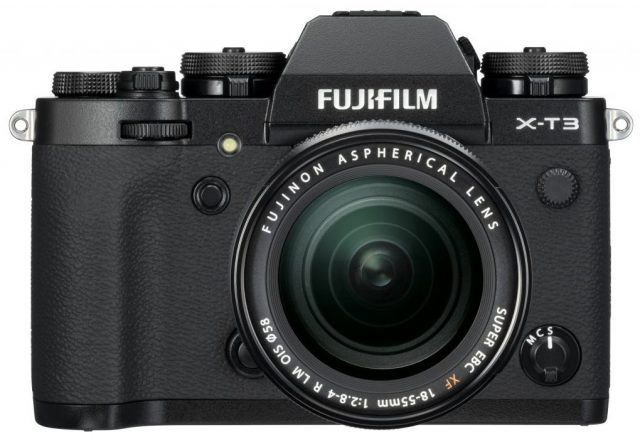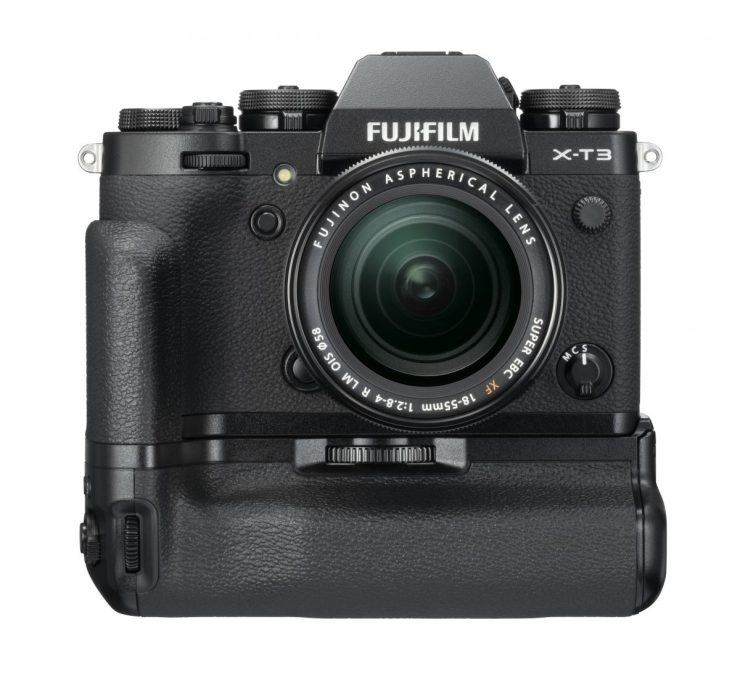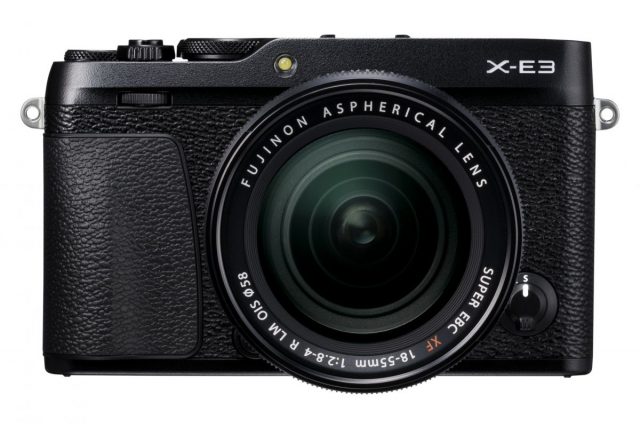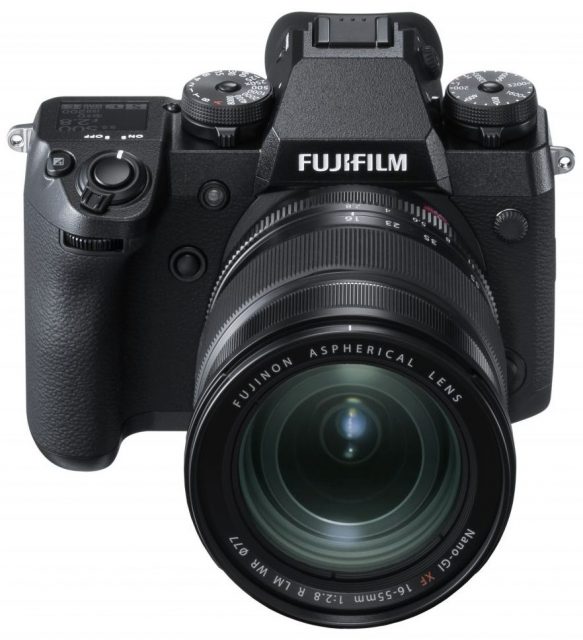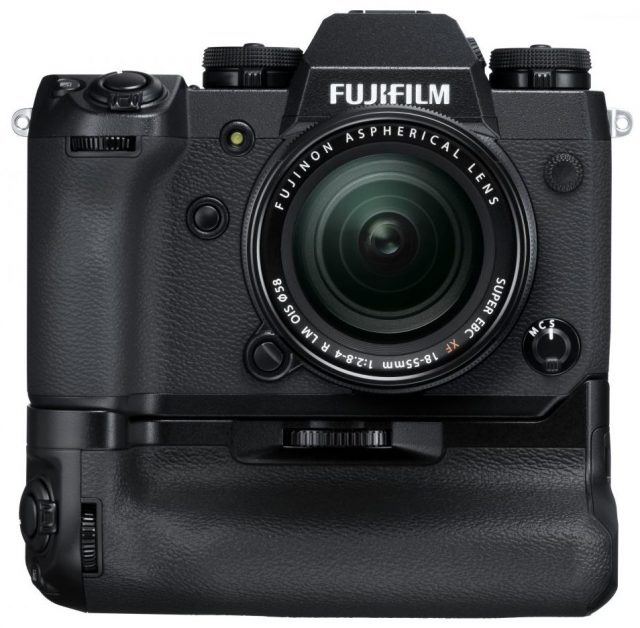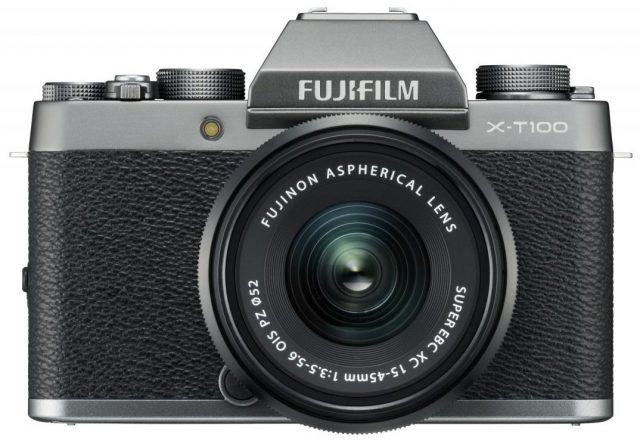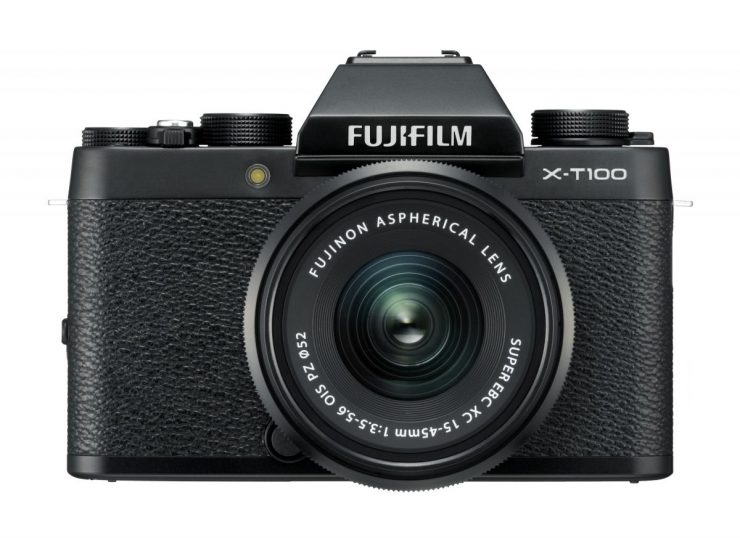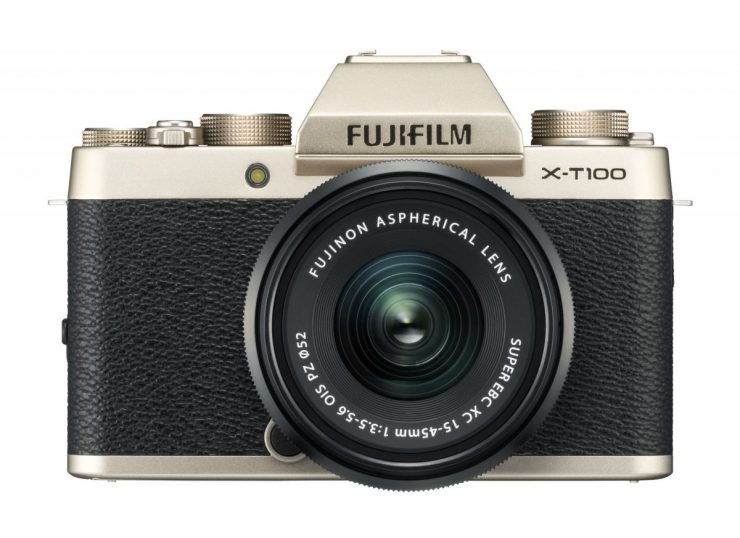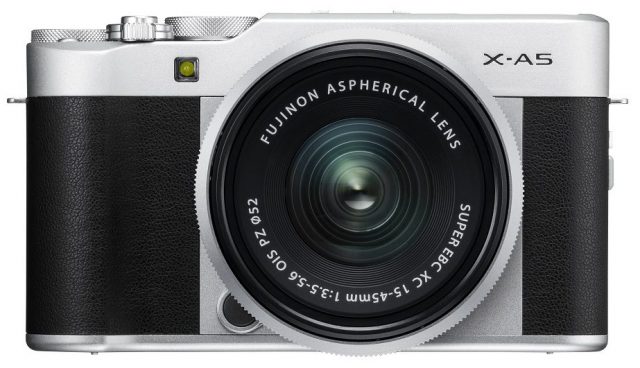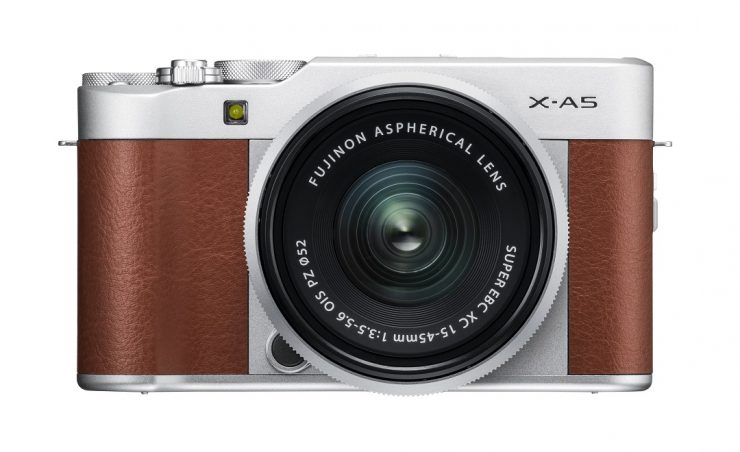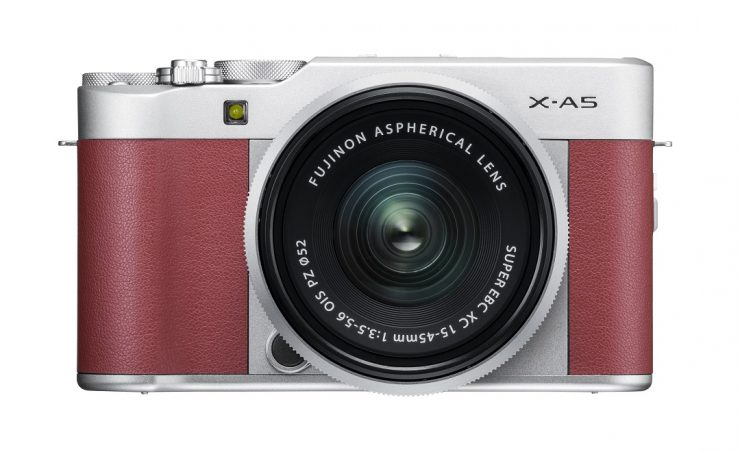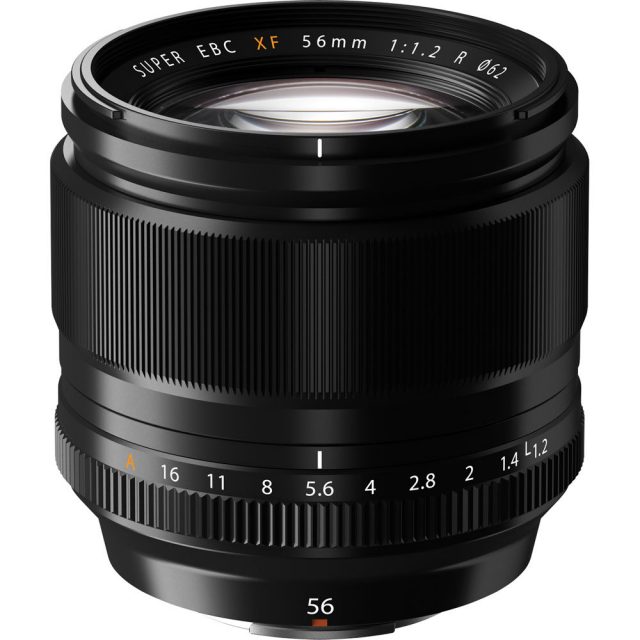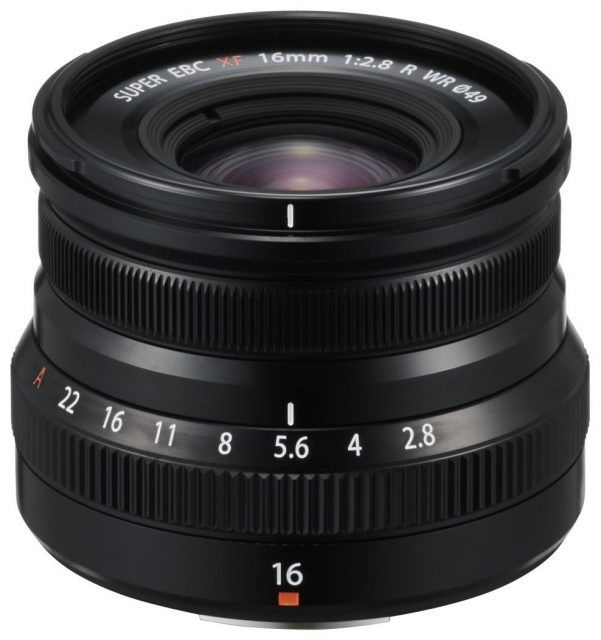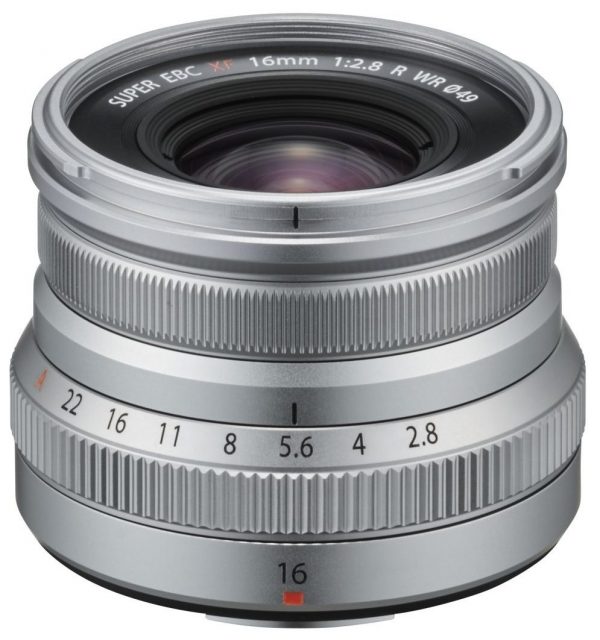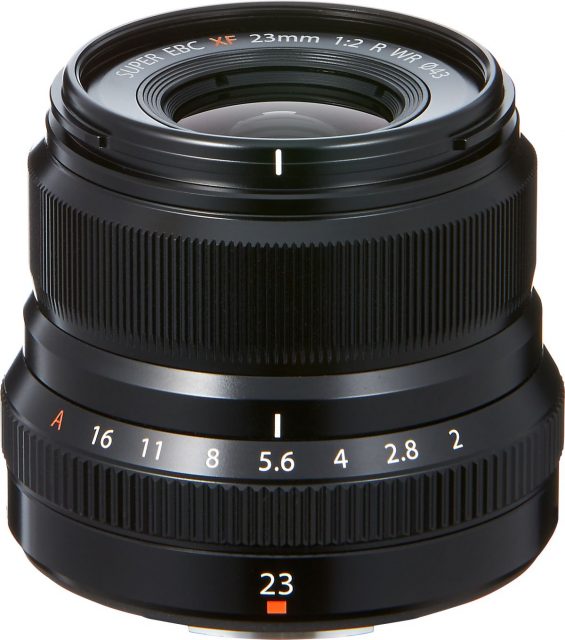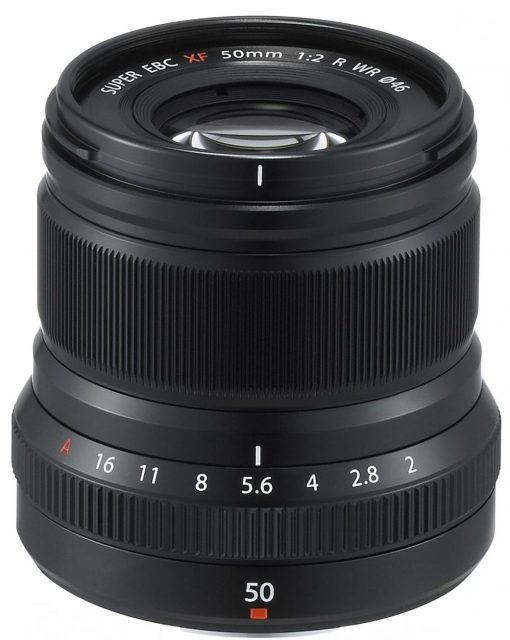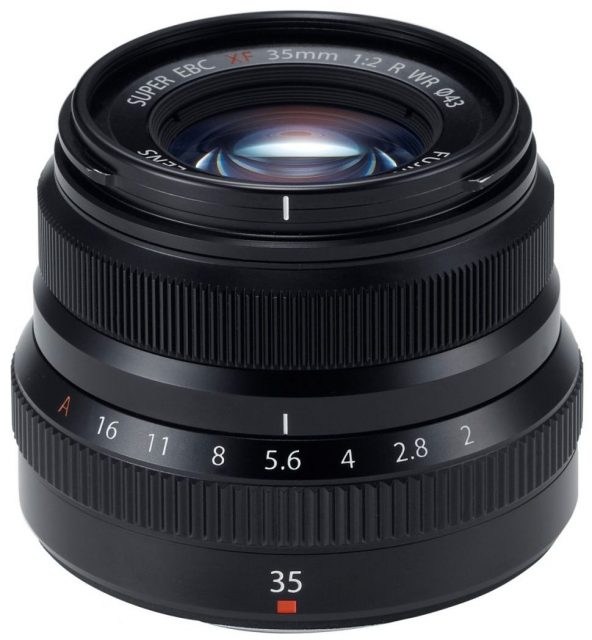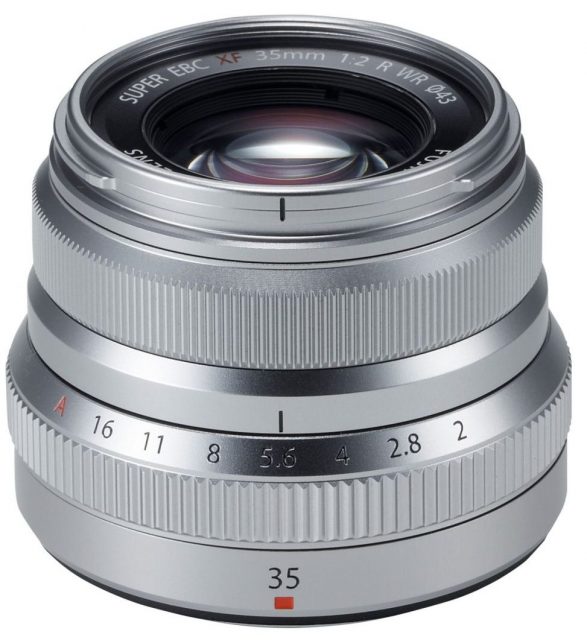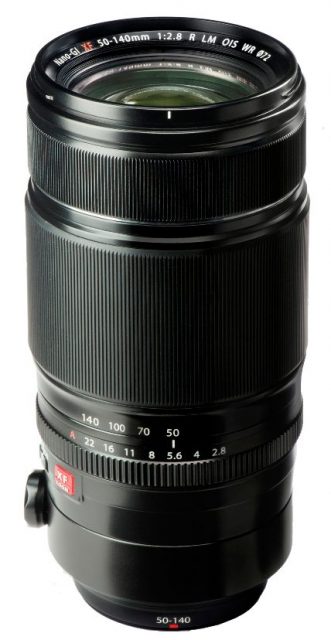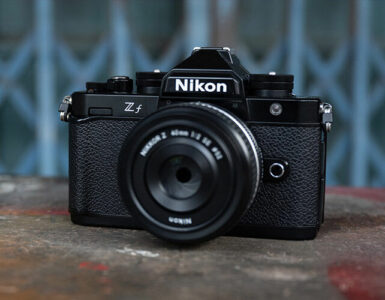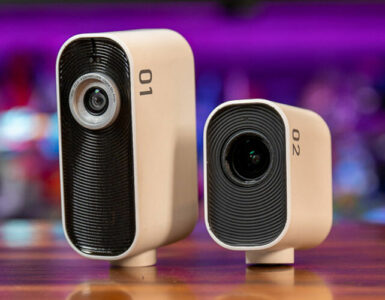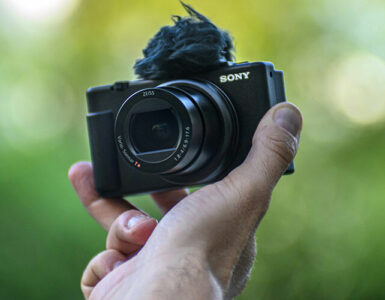We’re almost a quarter in to the new year and we’re sure there are some of you out there looking to grab a brand new Fujifilm camera and get into the famed X series.. We know how it feels, there are those of us in the office right now who are only too taken in by the X system, but let’s bring up to speed those of you just getting started.
What Is Fujifilm X?
The interchangeable-lens camera business started out in the early 90s with a number of big names, and one of them was Fujifilm. You may have heard of a couple of their early DSLR experiments – the S1 Pro, S2 Pro, S3 Pro, and the S5 Pro. Personally, I still hold a candle for the immensely capable S5 Pro to this date. These made use of Nikon F-mount lenses through a peculiar partnership that ended swiftly.
In 2012, Fujifilm sprang back into the industry with the now cult-classic X100 fixed lens APS-C mirrorless camera. I remember how it first was panned really badly for poor performance but many months later discovered how Fujifilm’s signature newfound Kaizen philosophy had began to shape its Fujifilm X system by completely turning the X100 into a more-than-usable street shooter. They’ve been unstoppable since.
After the X100 came the X-Pro1, X-E1, and the X-M1 bringing about the advent of Fujifilm’s 16.3 megapixel (MP) X-Trans sensor with a unique 6 by 6 filter array that minimises the very common moiré effects and allows for unrestricted image resolution and improved colour output as compared to what conventional Bayer array sensors allow. What we got – and still get – are images straight-out-of-camera (SOOC) that have a distinct Fujifilm X look that still is unsurpassed in its category. Drawback? The later iterations of the sensor have been known to exhibit purple flares, and users with a trained eye haven’t necessarily been kind to the presence of muddy features, especially if you require 100% clarity for work purposes.
The software support for X-Trans raw processing is also still relatively lacklustre to this date, unfortunately, and especially so on the Adobe front, so that’s a consideration if you aren’t moving away from Photoshop or Lightroom editing any time soon. The verdict is still out on whether “Enhance Details” does a decent enough job for the demosaicing issues plaguing the most discerning Fujifilm X users; for the rest of us, we’ve had successes with Capture One, darktable, Luminar, and Iridient Developer, depending on your choice of operating system.
I want to become an X-Photographer tomorrow, what do?
eBay came up short when we searched for “photographic talent”, but we do have an idea of the gear that could kickstart your foray into the prestigious group of X-Photographers, or at least score you some new Likes on social media.
We’ve seen plenty of additions to the X series family in the past couple of years but for the purposes of this guide (hopefully a recurring one!), we thought we’d introduce you to a few of the most current Fujifilm X camera bodies and lenses we swear by with some standout notes that matter (to us, at least):
Fujifilm X – The Standout Bodies
Fujifilm X100F
Sensor: 24.3MP X-Trans CMOS III & X-Processor Pro
Lens: 23mm/F2.0 Single Focal Length
ISO capability: ISO200 – ISO12,800 (Extended output ISO100, 25600, 51200)
Exposure compensation: -5.0EV-+5.0EV, 1/3EV step
AF type: Intelligent Hybrid AF (Contrast, Phase Detection)
Video: HD (1280×720) to Full HD (1920×1080, 59.94p / 50p / 29.97p / 25p / 24p / 23.98P, 36Mbps Continuous recording: up to approx. 14 min)
Film Simulation modes: 15 modes (PROVIA / Standard, Velvia / Vivid, ASTIA / Soft, CLASSIC CHROME, PRO Neg.Hi, PRO Neg.Std, Black& White, Black& White+Ye Filter, Black& White+R Filter, Black& White+GFilter, Sepia, ACROS, ACROS+Ye Filter, ACROS+R Filter, ACROS+G Filter)
Wireless: Geotagging, Wireless communication (Image transfer), View & Obtain Images, Remote camera shooting, PC Autosave, instax printer print
Why the X100F?
You’ve identified yourself as a street photographer, you know what to do with a 23mm lens (35mm in 35mm film equivalence), you want a camera that is compact, lightweight, uses a leaf shutter and can appreciate an amazing unique hybrid viewfinder that is a technological marvel. You want that sensor and almost everything in the X-Pro2 and X-T2, including that rear AF joystick, but just don’t need all those lenses and weight to cramp your distinct style. All you need to create magic is this, and hanging this around your neck is next to nothing.
See what you can achieve with the X100F: #fujifilmx100f
Fujifilm XF10
Sensor: 24.2MP APS-C CMOS
Lens: 18.5mm/F2.8 Single Focal Length
ISO capability: ISO200 – ISO12,800 (Extended output ISO100, 25600, 51200)
Exposure compensation: -5.0EV-+5.0EV, 1/3EV step
AF type: Intelligent Hybrid AF (Contrast, Phase Detection)
Video: 4K 3840 x 2160 15p, Continuous recording : up to approx. 30 min.
Film Simulation modes: 11 type (PROVIA/STANDARD, Velvia/VIVID, ASTIA/SOFT, CLASSIC CHROME, PRO Neg Hi, PRO Neg. Std, MONOCHROME, MONOCHROME+Ye FILTER, MONOCHROME+R FILTER, MONOCHROME+G FILTER, SEPIA)
Wireless: Geotagging setup, Image transfer (Individual image/Selected multiple images), View & Obtain Images, PC Autosave, instax Printer Print, Pairing registration, Delete pairing registration, Bluetooth ON/OFF setting, Auto image transfer, Seamless transfer, Smartphone Sync. Setting
Why the XF10?
You’ve always lusted after the Ricoh GR-type camera and while you don’t require the top-notch capabilities of the X100F, you have small pockets you can fill with this camera. You want something for an instant upgrade to your mobile phone when you vlog, and in 4K no less. The touch-screen panel is, well, a nice touch too.
See what you can achieve with the XF10: #fujifilmxf10
Fujifilm X-Pro2
Sensor: 24.3MP X-Trans CMOS III & X-Processor Pro
Lens mount: FUJIFILM X mount
ISO capability: ISO200 – ISO12,800 (Extended output ISO100, 125, 160, 25600, 51200)
Exposure compensation: -5.0EV-+5.0EV, 1/3EV step
AF type: Intelligent Hybrid AF (Contrast, Phase Detection)
Video: 4K 3840 x 2160 15p, Continuous recording : up to approx. 30 min.
Film Simulation modes: 15 modes (PROVIA / Standard, Velvia / Vivid, ASTIA / Soft, CLASSIC CHROME, PRO Neg.Hi, PRO Neg.Std, Black& White, Black& White+Ye Filter, Black& White+R Filter, Black& White+GFilter, Sepia, ACROS, ACROS+Ye Filter, ACROS+R Filter, ACROS+G Filter)
Wireless: Geotagging, Wireless communication (Image transfer), View & Obtain Images, Remote camera shooting, PC Autosave, instax printer print
Why the X-Pro2?
This camera is meant for the discerning street photographer who values a more discreet camera body with all the bells and whistles of a top-of-the-line ‘DSLR’ camera. With support for OIS type X mount lenses, an Advance Hybrid Multi Viewfinder, up to 1/8000 sec. Mechanical Shutter, a unique ACROS Film Simulation, and weather resistance – the X-Pro2 is the Aladdin carpet of the line, taking you to magical places far and wide on the quiet.
See what you can achieve with the XF10: #fujifilmxpro2
Fujifilm X-T3
Sensor: 26.1MP X-Trans CMOS 4 & X-Processor 4
Lens mount: FUJIFILM X mount
ISO capability: ISO160 – ISO12,800 (Extended output ISO100, 125, 25600, 51200)
Exposure compensation: -5.0EV-+5.0EV, 1/3EV step
AF type: Intelligent Hybrid AF (Contrast, Phase Detection)
Video: 4K(4096×2160) 59.94p/50p/29.97p/25p/24p/23.98p 400Mbps/200Mbps/100Mbps
59.94p/50p: up to approx. 20min. 29.97p/25p/24p/23.98p: up to approx. 30min
Film Simulation modes: 16 modes (PROVIA/Standard, Velvia/Vivid, ASTIA/Soft, Classic Chrome, PRO Neg.Hi, PRO Neg.Std, Black & White, Black & White+Ye Filter, Black & White+R Filter, Black & White+G Filter, Sepia, ACROS, ACROS+Ye Filter, ACROS+R Filter, ACROS+G Filter, ETERNA/Cinema), B & W Adjustment: -9-+9
Wireless: Geotagging, Wireless communication (Image transfer), View & Obtain Images, Remote camera shooting, PC Autosave, instax printer print
Why the X-T3?
Equipped with the very latest X-Trans sensor and X-Processor, phase detection AF up to the entire frame, up to 30 fps blackout-free high-speed continuous shooting, a Sports Viewfinder mode, monochrome adjustment, 4K/60P 10 bit video recording, weather resistance, support for OIS type lenses, AND a 3-way tilting touchscreen LCD panel – phew – this doesn’t have the ‘Pro’ in its moniker but it sure is meant for The Professional. If you make a living shooting professional stills in the studio and are making your first steps into the video world, make this your first choice.
See what you can achieve with the X-T3: #fujifilmxt3
Fujifilm X-T30
Sensor: 26.1MP X-Trans™ CMOS 4 & X-Processor 4
Lens mount: FUJIFILM X mount
ISO capability: ISO200 – ISO12,800 (Extended output ISO100, 125, 25600, 51200)
Exposure compensation: -5.0EV-+5.0EV, 1/3EV step
AF type: Intelligent Hybrid AF (Contrast, Phase Detection)
Video: 4K(4096×2160) 29.97p/25p/24p/23.98p 200Mbps/100Mbps up to approx. 10min
Film Simulation modes: 16 modes (PROVIA/Standard, Velvia/Vivid, ASTIA/Soft, Classic Chrome, PRO Neg.Hi, PRO Neg.Std, Black & White, Black & White+Ye Filter, Black & White+R Filter, Black & White+G Filter, Sepia, ACROS, ACROS+Ye Filter, ACROS+R Filter, ACROS+G Filter, ETERNA/Cinema), B & W Adjustment: -9~+9
Wireless: Geotagging, Wireless communication (Image transfer), View & Obtain Images, Remote camera shooting, PC Autosave, Image Transfer Order, instax printer print
Why the X-T30?
Buy this if you want (almost all) the capabilities of the X-T3, but much prefer a more compact and lightweight body at only 383g. Equipped with the same latest X-Trans sensor and X-Processor, phase detection AF up to the entire frame, Sports Viewfinder mode, 30 fps blackout-free continuous shooting, monochrome adjustment, the Advanced SR Auto mode, the updated-inclusion of the rear AF joystick rather than the D-Pad from the X-T20, and even a tilting touchscreen LCD panel, Fujifilm has delivered a smaller camera for a much lower price without sacrificing much for the casual photographer. Also for this writer, the X-T30 is also in the running for his camera of the year.
See what you can achieve with the X-T30: #fujifilmxt30
Fujifilm X-E3
Sensor: 24.3MP X-Trans CMOS III & X-Processor Pro
Lens mount: FUJIFILM X mount
ISO capability: ISO200 – ISO12,800 (Extended output ISO100, 125, 160, 25600, 51200)
Exposure compensation: -5.0EV-+5.0EV, 1/3EV step
AF type: Intelligent Hybrid AF (Contrast, Phase Detection)
Video: 4K(4096×2160) 29.97p/25p/24p/23.98p 200Mbps/100Mbps up to approx. 10min
Film Simulation modes: 15 modes [PROVIA/Standard, Velvia/Vivid, ASTIA/Soft, CLASSIC CHROME, PRO Neg.Hi, PRO Neg.Std, Black& White, Black& White+Ye Filter, Black& White+R Filter, Black& White+GFilter, Sepia, ACROS, ACROS+Ye Filter, ACROS+R Filter, ACROS+G Filter]
Wireless: Geotagging, Wireless communication [Image transfer], View & Obtain Images, Remote camera shooting, PC Autosave, instax printer print, Pairing registration, Delete pairing registration, Bluetooth ON/OFF Setting, Auto image transfer
Why the X-E3?
This will appeal to the lifestyle photographer with an extremely subjective taste in ergonomics for that perfect portable interchangeable system. Again, this comes with touch-screen operation plus the much better tactile AF joystick, 4K video recording, Advanced SR Auto mode, and was the first to be equipped with low-power Bluetooth always-on connectivity. With the same sensor as the one in the X-Pro2, there is very little sacrifice you’re making in choosing the X-E3, and you’ll probably have more cash for a better lens you were deciding on too.
See what you can achieve with the X-E3: #fujifilmxe3
Fujifilm X-H1
Sensor: 24.3MP X-Trans CMOS III & X-Processor Pro
Lens mount: FUJIFILM X mount
ISO capability: ISO200 – ISO12,800 (Extended output ISO100, 125, 160, 25600, 51200)
Exposure compensation: -5.0EV-+5.0EV, 1/3EV step
AF type: Intelligent Hybrid AF (Contrast, Phase Detection)
Video: 4K(4096×2160) 24p / 23.98p 200Mbps / 100Mbps / 50Mbps up to approx. 15min., 4K(3840×2160) 29.97p / 25p / 24p / 23.98p 200Mbps / 100Mbps / 50Mbps up to approx. 15min.
Film Simulation modes: 16 modes (PROVIA/Standard, Velvia/Vivid, ASTIA/Soft, Classic Chrome, PRO Neg.Hi, PRO Neg.Std, Black & White, Black & White+Ye Filter, Black & White+R Filter, Black & White+G Filter, Sepia, ACROS, ACROS+Ye Filter, ACROS+R Filter, ACROS+G Filter, ETERNA/Cinema)
Wireless: Geotagging, Wireless communication [Image transfer], View & Obtain Images, Remote camera shooting, PC Autosave, instax printer print, Pairing registration, Delete pairing registration, Bluetooth ON/OFF Setting, Auto image transfer
Why the X-H1?
This camera has everything – Eterna Film Simulation, Flickering reduction, in-body image stabilisation, a feather-touch shutter button, advanced features for your professional workflow, multi-flash lighting support, and – finally -top-of-the-line 4k video capabilities from Fujifilm. Also it looks absolutely stunning. That said, this is the best APS-C sensor camera for the videographer who either needs a secondary video camera, and/or wants that Fujifilm X look, bar none.
See what you can achieve with the X-H1: #fujifilmxh1
Fujifilm X-T100
Sensor: 24.2MP APS-C CMOS
Lens mount: FUJIFILM X mount
ISO capability: ISO200 – ISO12,800 (Extended output ISO100, 25600, 51200)
Exposure compensation: -5.0EV-+5.0EV, 1/3EV step
AF type: Intelligent Hybrid AF (Contrast, Phase Detection)
Video: 4K 3840 x 2160 15P, Continuous recording : up to approx. 30 min.
Film Simulation modes: 11 type (PROVIA/STANDARD, Velvia/VIVID, ASTIA/SOFT, CLASSIC CHROME, PRO Neg Hi, PRO Neg. Std, MONOCHROME, MONOCHROME+Ye FILTER, MONOCHROME+R FILTER, MONOCHROME+G FILTER, SEPIA)
Wireless: Geotagging setup, Image transfer (Individual image/Selected multiple images), View & Obtain Images, PC Autosave, instax Printer Print, Pairing registration, Delete pairing registration, Bluetooth ON/OFF setting, Auto image transfer
Who is the X-T100 for?
Sometimes it’s just not about the specs, but there is a 24MP APS-C sensor house inside this retro-esque and lightweight body with a 3-way tilting touchscreen LCD panel, wireless connectivity, 4K Burst shooting, and an Advanced SR Auto mode that automatically optimizes the camera settings for different scenes. This is a camera for the enthusiast parent that needs a no-frills setup for the holidays but still know their way around with different lenses, and has absolutely zero energy left to process the already-appealing JPEG files.
See what you can achieve with the X-T100: #fujifilmxt100
Fujifilm X-A5
Sensor: 24.2MP APS-C CMOS
Lens mount: FUJIFILM X mount
ISO capability: ISO200 – ISO12,800 (Extended output ISO100, 25600, 51200)
Exposure compensation: -5.0EV-+5.0EV, 1/3EV step
AF type: Intelligent Hybrid AF (Contrast, Phase Detection)
Video: 4K 3840 x 2160 15P, Continuous recording : up to approx. 5 min.
Film Simulation modes: 11 type (PROVIA/STANDARD, Velvia/VIVID, ASTIA/SOFT, CLASSIC CHROME, PRO Neg Hi, PRO Neg. Std, MONOCHROME, MONOCHROME+Ye FILTER, MONOCHROME+R FILTER, MONOCHROME+G FILTER, SEPIA)
Wireless: Geotagging setup, Image transfer (Individual image/Selected multiple images), View & Obtain Images, PC Autosave, instax Printer Print, Pairing registration, Delete pairing registration, Bluetooth ON/OFF setting, Auto image transfer
Who is the X-A5 for?
Aimed squarely at the new photographer and the young child of a parent, the X-A5 still competently packs a 24MP APS-C CMOS sensor for the same quality stills you expect from the best in its category, a unique retro design at a budget, a front-flip touch-screen panel for easy selfies and very casual vlogging, and easy-access macro photography.
See what you can achieve with the X-A5: #fujifilmxa5
Fujifilm X – The Prime Lens Trinity
We definitely have our favourites of the lens lineup, valuing price and output in all considerations, and we have nothing but high praises for our “holy trinity” of prime lenses. Here they are:
XF16MM/F1.4 R WR
Aperture: F1.4-F16
Focus range: 15cm-∞
Dimensions: ø73.4mm x 73.0mm
Weight: 375g
Why the 16/1.4?
Make no mistake, this is a substantial lens in all manners. Fortunately, what you’re getting is an exceptionally wide and sharp lens with no compromises in detail when you’re stuck in tight physical settings. There is no lens in existence that focuses as close as 15cm and generates that depth and type of bokeh and that alone is enough reason for us to always have this in our camera bags, especially when our toys need all that spatial context. Weather resistance also helps in inclement weather for a bit.
See what you can achieve with the XF16MM/F1.4 R WR: #xf16mmf14wr
XF35MM/F1.4 R
Aperture: F1.4-F16
Focus range: 0.8m-∞, Macro 28cm-2.0m
Dimensions: ø65.0mm x 50.4mm
Weight: 187g
Why the 35/1.4?
This is the first ‘normal’ lens out of the Fujifilm X system, and boy has this remained a cult classic in the photographic world. At a 53mm (35mm-film-equivalent) focal length, it’s not the easiest lens to use, but it is revered amongst the photojournalists of the past, and is a go-to challenge for first-timers trying to train their photographic eye. Outside of that, there is an intangible, almost indelible image quality output from this lens where words escape the best of us who’ve had our ways with it.
See what you can achieve with the XF35MM/F1.4 R: #xf35mmf14
XF56MM/F1.2 R
Aperture: F1.2-F16
Focus range: 0.7m-∞, Macro 0.7m-3.0m
Dimensions: ø73.2mm x 69.7mm
Weight: 405g
Why the 56/1.2?
t’s one of those heavy ones, but you just might never take this lens off. The 56mm has its studio brethren – the APD model – where it has its place, but our hearts will always be with this beastly glass. With an 35mm-film-equivalent focal length of 85mm, this was meant to be traditionally a portrait-specific lens, but has taken on new life with more than few photographers on the streets who have fallen in love with its stunning image quality and bokeh fall-off. It is one thing to describe a lens as ‘life-changing’, but you’ll believe when we say there is no other product in the current Fujifilm X system lineup that instantly and distinctly upgrades your images the way the 56mm/F1.2 R does. You’ll know when an image was taken with this lens, and you will rarely be disappointed with the final piece to our holy trinity.
See what you can achieve with the XF56MM/F1.2 R: #xf56mmf12
Fujifilm X – The Weather-Resistant Lens Trinity For The Every-person
Let’s face it, we don’t all have unlimited disposable income and most of us don’t even photograph for a living to garner any ROI for our purchases, and the people at Fujifilm know this very intimately. In fact, they went ahead and just made a lineup of lenses that is easy on the wallet without sacrificing that Fujifilm X image quality we’ve all come to love. Frankly, it’s mind-boggling how they’ve done this. Here are our ‘trinity’ picks for literally anyone, even you without the good credit score:
XF16MM/F2.8 R WR
Aperture: F2.8-F22
Focus range: 17cm-∞
Dimensions: ø60.0mm x 45.4mm
Weight: 155g
Why the 16/2.8?
Only recently announced and soon-to-be-released at the time of this guide, the 16mm/2.8 R WR lens comes in at a third of its elder brother’s weight and less than half the size, and as you’ll expect, the budget too. However that hasn’t dimmed its spectacular value, instead it only highlighted just how much value this lens provides for the hobbyist who needs a wide-angle lens that simply performs. Silent, water-resistant, sharp from end-to-end with the aperture merely slightly stopped down, with a distinct Fujifilm X bokeh that is more than decent, this was a clear Day-One purchase for the GeekCulture team and it should be for you too.
See what you can achieve with the XF16MM/F2.8 R WR: #xf16mmf28
XF23MM/F2 R WR
Aperture: F2-F16
Focus range: 22cm-∞
Dimensions: ø60.0mm x 51.9mm
Weight: 180g
Why the 23/2?
Some compare this to the fixed lens on the X100 series of cameras, but make no mistake, this most definitely stands proudly on its own with performance and value. At a slightly ‘easier’ focal length, this checks all the boxes for the first-time prime lens user looking to try their hand at taking their photography chops to a next level. With water-resistance and a compact and silent physicality, you’ll be roaming and snapping everywhere with ease and a sense of confidence.
See what you can achieve with the XF23MM/F2 R WR: #xf23mmf2
XF50MM/F2 R WR
Aperture: F2-F16
Focus range: 39cm-∞
Dimensions: ø60.0mm x 59.4mm
Weight: 200g
Why the 50/2?
Looking to kickstart your portrait photography career? In the rain? Look no further while shooting closer with the capable 50mm/F2 R WR. You’ll start to look at the world with a different point of view almost immediately without breaking the bank.
See what you can achieve with the XF50MM/F2 R WR: #xf50mmf2
Fujifilm X – Special Mentions for the Special Glass
We can’t love everything, but we thought we’d share some of the special lenses that have special places in our hearts and camera bags:
Aperture: F2-F16
Focus range: 35cm-∞
Dimensions: ø60.0mm x 45.9mm
Weight: 170g
Why the 35/2?
Buy this if you can’t afford the F1.4 version and would rather a normal lens that is silent like a ninja.
See what you can achieve with the XF35MM/F2 R WR: #xf35mmf2
Aperture: F2.8-F4
Focus range: 0.6m-∞, Wide 30cm-10m, Telephoto 40cm-10m
Dimensions: ø65.0mm x 70.4mm (Wide), 97.9mm (Telephoto)
Weight: 310g
Why the 18-55/2.8-4?
Immediately get this if you want the best kit lens to ever come out from any camera manufacturer. There has not been a kit lens of this calibre and at this affordable price point, and we’ve never been disappointed by the quality of images shot through this lens. The versatility of the focal lengths also lends well to anyone looking for ‘one’ lens to do it all capably. Take this travelling if you simply cannot bring all the lenses you have.
See what you can achieve with the XF18-55MM/F2.8-4 LM OIS: #xf1855
Aperture: F2.8-F22
Focus range: 1m-∞, Macro 1m-3m
Dimensions: ø82.9mm x 175.9mm (Wide/Telephoto)
Weight: 995g
Why the 50-140/2.8?
Buy this if you have strong arms and you absolutely dig photographic disciplines in portraiture, sports, and/or wildlife. At a F2.8 constant aperture throughout the entire telephoto range, and that built-in Optical Image Stabilisation, you wouldn’t just get the shot, you’ll nail it with stellar object-background separation and clarity from a safe distance.
See what you can achieve with the XF50-140MM/F2.8R LM OIS WR: #xf50140
We’ve come to the end of our guide with a look into the Fujifilm X series system, and we hope it helps some of you at least make a couple of decisions before jumping all into the #fujiXfam.
See all Fujifilm’s X cameras and X-mount lenses here.
One day Hiro have bottle of nice rum. Then Hiro smashed. Hiro never had chance to find rum name. Tell someone you love them before it too late. Hiro also harsh critic of people who walk dogs only one day a week.


